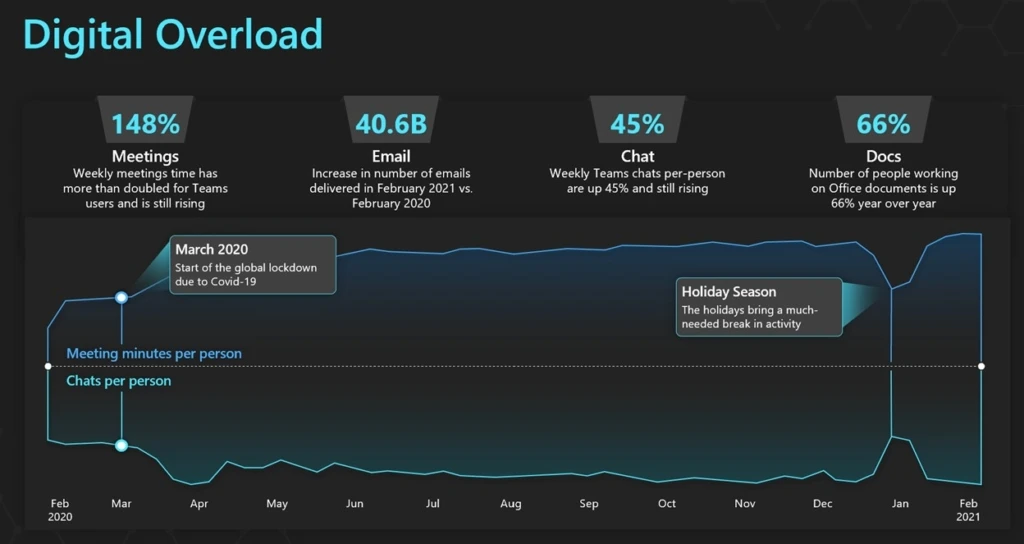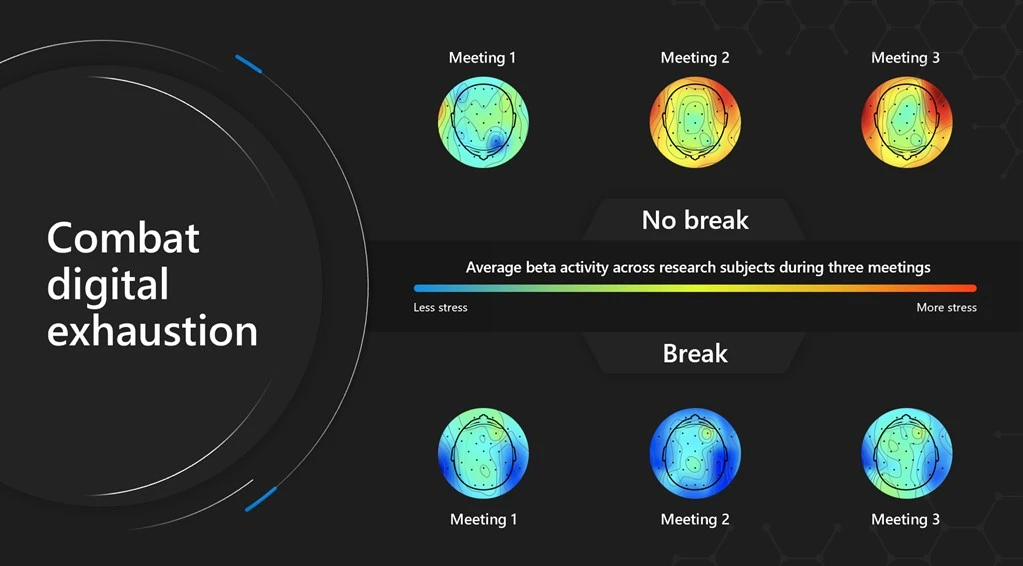
Tackling digital overload in the modern defense workplace

In our “A digital workplace for a modern defense ecosystem” blog, I shared some thoughts about hybrid workplaces, changing talent expectations, and what this means for Defense and Intelligence organizations around the world. The hybrid work environments initiated in response to COVID-19 have given us important lessons about reinventing the modern defense workplace. Now, it’s up to us to make that new workplace a reality, and to make it as healthy and productive as possible. Register for this webinar where we explore ways in which the future defense workplace can meet the needs and expectations of an evolving workforce.
Tackling digital overload
Hybrid work environments are here to stay. Employees all over the world have new expectations around when, where, and how they work. These hybrid environments are wonderful in many ways, but they do introduce new challenges. One such challenge is a condition that many people are feeling right now: “digital overload.” Along with the increase in remote and flexible work options comes an increase in the digital intensity of the workday, with the number of meetings and chats steadily increasing.
Some examples we are seeing across industries, as reported in our 2021 Work Trend Index:
- Time spent in Microsoft Teams meetings has more than doubled globally and continues to climb.
- The average Teams meeting is 10 minutes longer than it was a year ago, increasing from 35 to 45 minutes.
- The number of emails delivered in February, when compared to the same month last year, is up by 40.6 billion.
- The average Teams user is sending 45 percent more chats per week and 42 percent more chats per person after core hours and rising.
- The number of people working on Microsoft Office documents is up 66 percent year over year.

Figure 1: Analysis of collaboration activity across Microsoft 365 tools from February 2020 to February 2021. This visualization is based on aggregated data, without personal or organization-identifying information.
This barrage of communications is mostly unstructured and unplanned, with 62 percent of calls and meetings happening in ad hoc fashion. That’s not a bad thing—it speaks to the rapid adoption of hybrid capabilities and shows that hybrid collaboration is working, which is wonderful. But it also shows that the digital intensity of our workday is increasing, and we need to be thoughtful about how we help manage it—particularly in high-stress, high-stakes lines of work such as defense and intelligence.
To effectively reduce digital overload in the defense workplace, we must improve our workplace tools to enhance the employee experience, and to change the defense culture to better care for people.
At Microsoft, we are rolling out hundreds of new capabilities and features in our Modern Work portfolio to help combat digital exhaustion. Today I will share one simple example which nicely demonstrates the intersection between digital tooling, psychology, and the human experience. With many workers now in back-to-back digital meetings all day long, studies show that stress levels rise significantly as those meetings stack up. However, with as little as a five-minute break between meetings, stress can be mitigated to preserve the health and well-being of the workforce. Even a short break can help reduce the cognitive load associated with context switching.
Considering that, we have updated Microsoft Outlook and Teams to give the option to automatically shorten all meetings by five or ten minutes—thus ensuring that employees have a break before jumping into their next meeting. It is configurable by both organization and individual, and it gives people the option to manage meetings and breaks according to their own preferences. As you can see in Figure 2, the beta activity with this feature in place demonstrates reduced stress levels and helps combat digital exhaustion for workers. This is a change that my own team has adopted here at Microsoft. I can personally attest that it makes a significant difference in my stress levels throughout the course of the day, and it’s a change for which I am grateful.

Figure 2: Beta activity across back-to-back meetings.
The bottom line is this: defense customers and workers tell us that they want and expect a hybrid work environment, but they don’t want the digital overload that goes along with it. We must update the digital defense workplace to promote employee wellbeing and meet the changing expectations of the defense workforce. This will help us attract and retain the best and brightest talent, while increasing the well-being and productivity of global defense workers everywhere, ensuring they have the mental and physical fitness to continue supporting the mission.
It is these types of changes—those that improve the workplace experience through technology, psychology, and culture—that make all the difference.
Watch this webinar on Modernizing the Digital Workplace for Defense where we will explore ways in which the future defense workplace can meet the needs and expectations of an evolving workforce, and how the hybrid model can improve collaboration, innovation, and well-being for defense workers around the world. The panel will be hosted by Christiane Coda, Industry Digital Strategist at Microsoft for Defense and Intelligence Worldwide Public Sector. Confirmed panelists also include Jean-Paul Massart, Chief, NATO Digital Workplace; and Raphael de Cormis, Director of Thales Digital Factory, Thales WW. Register for the event today.
To learn more about how Microsoft is helping defense and intelligence organizations around the world, please visit Microsoft Defense and Intelligence.




